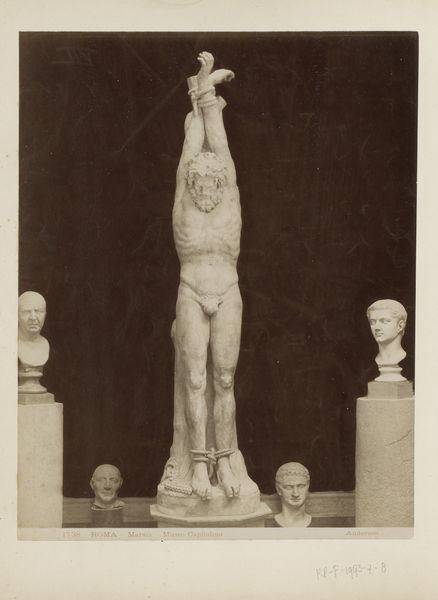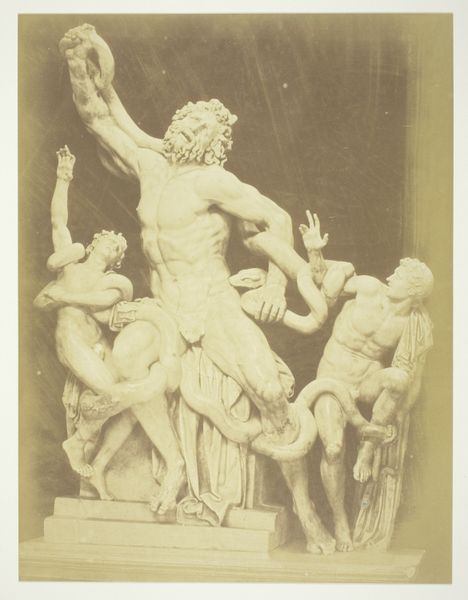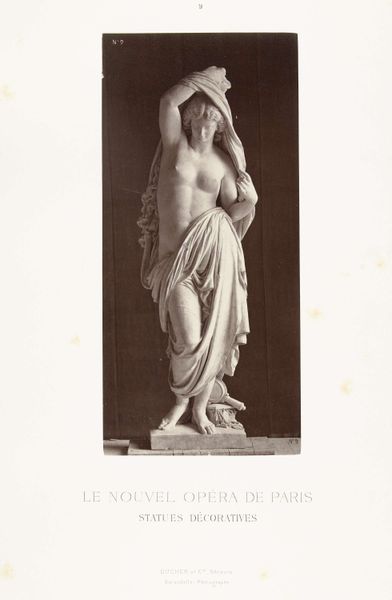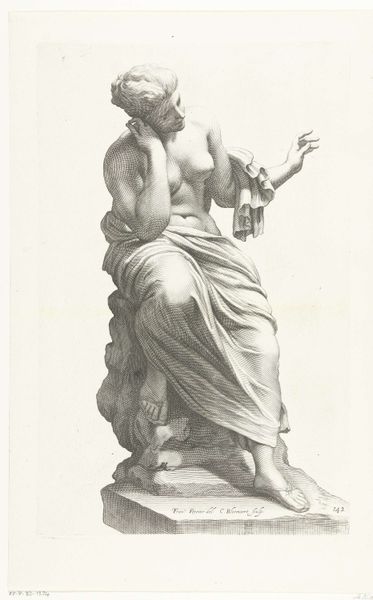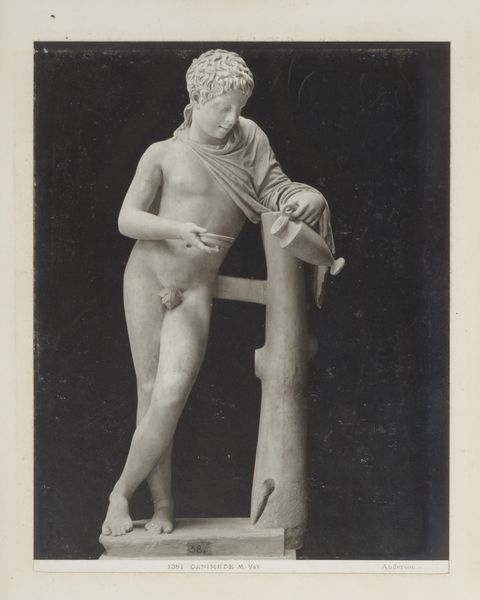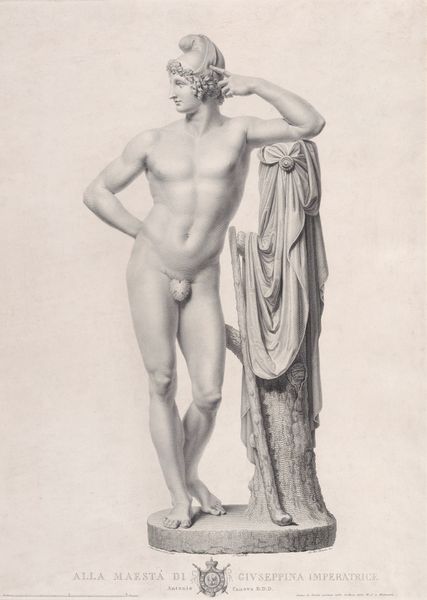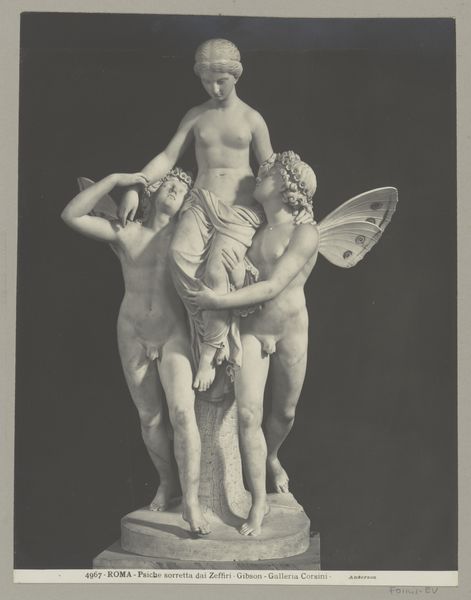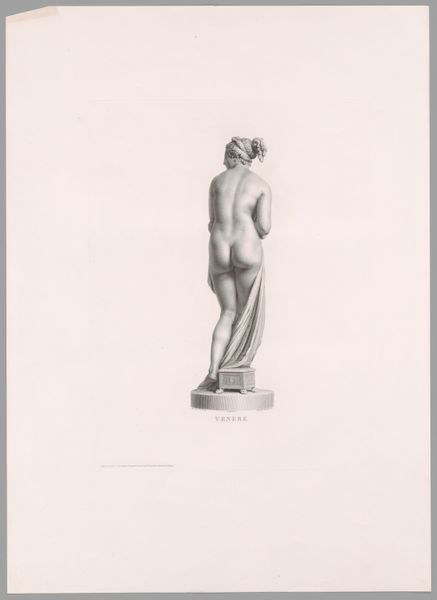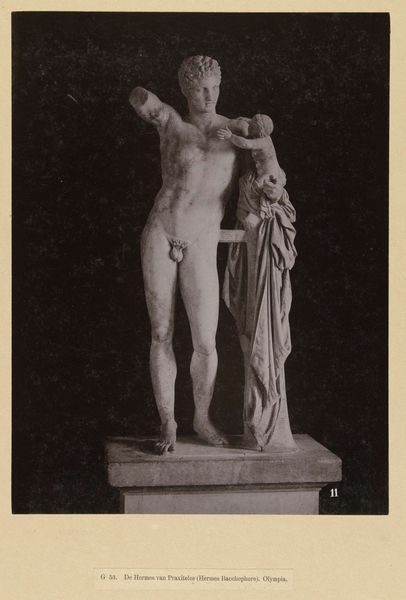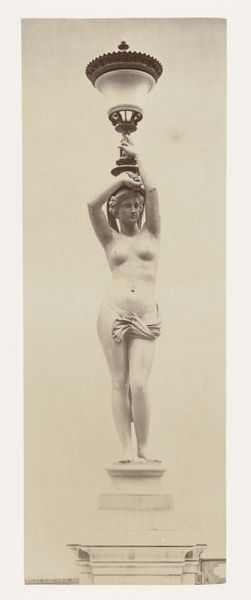
Beeldengroep van een naakte man met lauwerkrans en geheven armen met daarin een harp, aan zijn zijde een vrouw met tamboerijn, aan zijn andere zijde een vrouw met schrijftablet c. 1878 - 1881
0:00
0:00
Dimensions: height 415 mm, width 290 mm, height 620 mm, width 438 mm
Copyright: Rijks Museum: Open Domain
Curator: This photographic print, attributed to Louis-Emile Durandelle, captures a sculptural group likely dating between 1878 and 1881. The subject features a nude male figure crowned with laurel, arms raised, holding a harp. Flanking him are two women, one with a tambourine and the other with a writing tablet. Editor: It feels simultaneously heroic and oddly sterile, doesn’t it? The stark light and muted tones drain away any sense of warmth. And those classical poses... they’re almost too perfect. Curator: Well, let's consider the context. Durandelle was known for documenting the construction and ornamentation of the New Paris Opera, a grand project emblematic of the Third Republic's aspirations. This image likely served to record a specific decorative element for posterity, perhaps even as part of the Opera's own promotional material. The print medium allowed for mass dissemination, contributing to the opera house's overall branding. Editor: Right, so the image is not just a simple documentation, but an ideological instrument contributing to the mythologization of the Opera and of course, Paris itself. The choice of allegorical figures – the male representing triumph, perhaps of artistic endeavour, and the muses symbolizing music and poetry—is inherently gendered, and constructs a narrative where the male form and achievement are centrally positioned as creative, while the women inspire as passive. We need to also reflect on the construction of "Frenchness" it puts forward. Curator: Absolutely, but what about the materiality? The texture of the sculpture itself, captured in detail by the photographic process, showcases the labor and craftsmanship involved. Note the chisel marks and the subtle gradations of light across the marble or stone. The artist who rendered the figures from inert rock has vanished from the record. What were the economics behind all of the artistry displayed? Editor: Yes! It also raises questions about the politics of display, as the sculpture itself likely played a part in the opera house's narrative of bourgeois entitlement and national self-regard during that fraught period in France, right? There is so much erasure within idealized displays like these... Who built it? Whose cultural forms were being centralized in French society through such displays? The very existence of such projects hinged on extraction and economic disparity. Curator: An important thread to keep unspooling. The image reminds us how even ostensibly beautiful art participates in and embodies structures of power. Editor: Precisely! That push and pull, between admiration and a deeper awareness of its embedded societal messaging, makes it such a captivating image to reflect on today.
Comments
No comments
Be the first to comment and join the conversation on the ultimate creative platform.
